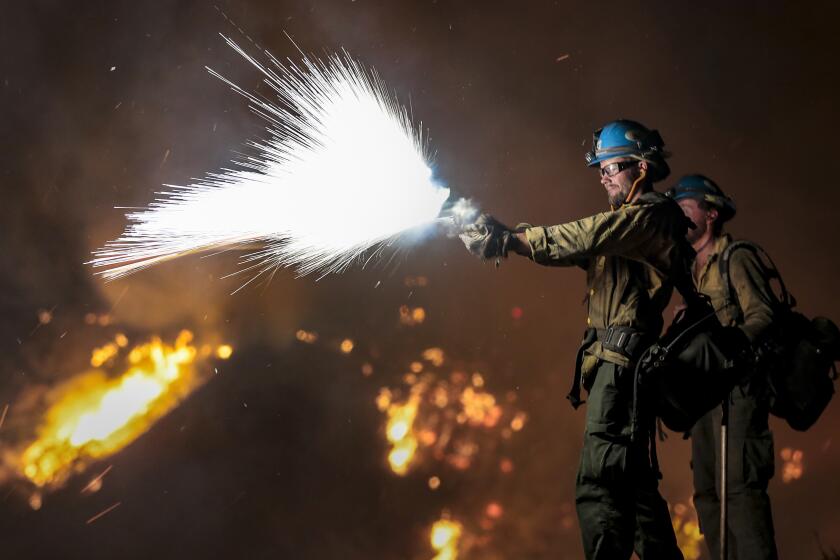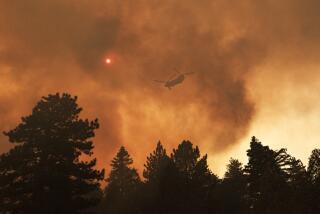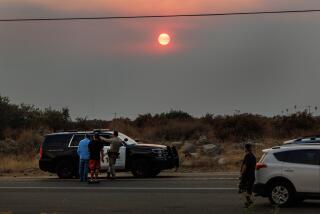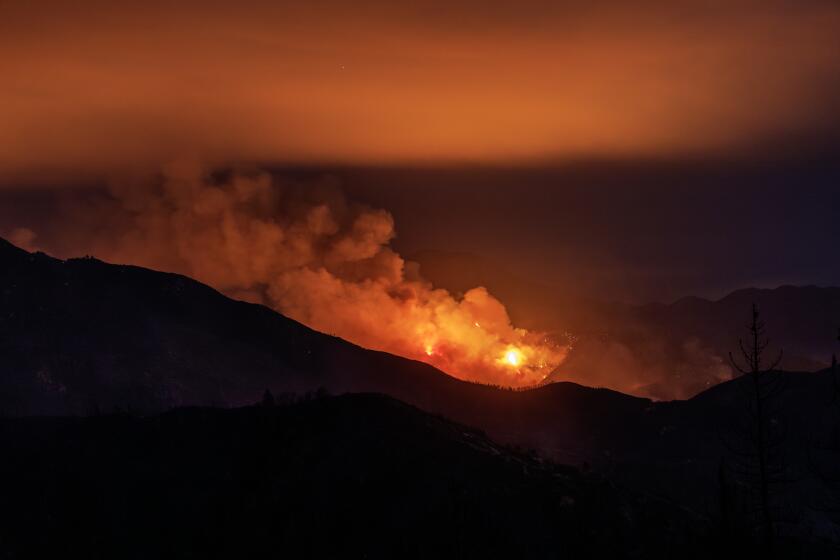Smoke keeps choking Southern California as Bobcat fire grows
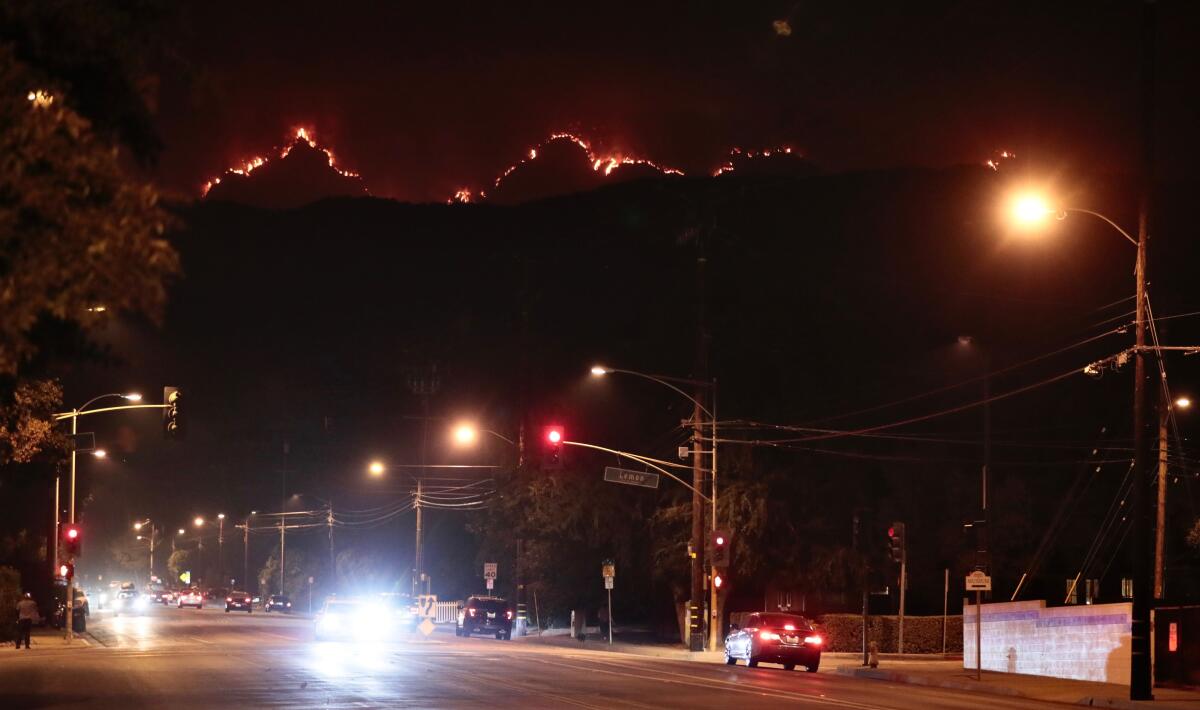
The Bobcat fire burning in the Angeles National Forest has torn through nearly 30,000 acres and continues to send thick, unhealthful smoke into the Los Angeles Basin.
Air quality remained bad across the region on Saturday, with much of the basin under unhealthy air warning and the area near the Bobcat fire under hazardous air warning.
L.A. Zoo is closing Sunday and Monday because of bad air quality, and the county is shutting down some COVID-19 testing centers. The Rams said they are monitoring the air quality in advance of Sunday’s big game.
As of Saturday morning, the fire was 6% contained, marking some progress for firefighters who have been on the lines for days. The fire has been moving north away from foothill communities, but water drops have been at times limited because of visibility issues caused by the smoke.
Altadena is one of seven communities that remain under an evacuation warning, along with Monrovia, Arcadia, Bradbury, Sierra Madre, Duarte and Pasadena.
Air quality has continued to nosedive across Southern California, with the looming smoke creating a plume up and down the West Coast stretching more than 1,000 miles, said Philip Fine, deputy executive officer of the South Coast AQMD.
Fears of a significant spread of the Bobcat fire dissipated as Santa Ana winds failed to materialize, but foothill communities remain on high alert.
Smoke advisories will remain in effect throughout the day and likely through the weekend, he added.
Fine said the unpredictability of wildfires — including how long they will burn, how hot they will be and how much smoke they will create — makes it difficult to forecast air quality beyond one or two days. But, he said, air quality over the weekend will likely not be great.
Poor air quality also contributed to the closure of eight parks in Los Angeles County: Eaton Canyon, Devil’s Punchbowl, Frank G. Bonelli Regional Park, Lario Staging Area, Marshall Canyon, Peck Road Water Conservation Park, San Dimas Canyon Natural Area and Santa Fe Dam Recreation Area.

The closures, which will continue throughout the weekend, were ordered “in the best interest of park guests, community and staff,” the county’s Department of Parks and Recreation said.
Stephen Cooper, an Altadena resident and fitness instructor, said the smoke was so thick Friday morning that he canceled his outdoor fitness class.
“This morning I could smell smoke and then looked at the [air quality index] and that was 205 — ‘very unhealthy,’” he said. “I’m usually hammering on my clients about the importance of consistency when it comes to training and healthy eating, but when it’s unhealthy like this, it makes no sense to push it.”
Here are tips for managing during times of poor air quality:
- Stay indoors, if possible.
- Keep windows and doors closed.
- Check local public health alerts and the Southern California air quality map.
- Find an air-conditioned place, like a designated L.A. County Cooling Center.
- Take extra precautions to protect people with heart or lung disease (including asthma), the elderly and children, as they may be more likely to experience poor health if they breathe wildfire smoke.
- Avoid vigorous physical activity.
- Run your air conditioner if you have one. Make sure it has a clean filter and that it is recirculating the indoor air to prevent bringing additional smoke inside.
- Create a clean air space in your home by using a portable air cleaner instead of or in addition to your air conditioner. Do this in one or more rooms with the doors and windows closed.
- Avoid using a whole-house fan or swamp cooler with an outside air intake.
- Avoid using indoor or outdoor wood-burning appliances, including fireplaces and candles.
- Do not rely on “dust masks” for protection. Paper masks can block large particles such as sawdust but do not protect lungs from the small particles or gases in wildfire smoke. Disposable respirators such as N-95 or P-100 respirators can offer some protection if they are worn properly and have a tight fit.
More to Read
Sign up for Essential California
The most important California stories and recommendations in your inbox every morning.
You may occasionally receive promotional content from the Los Angeles Times.
